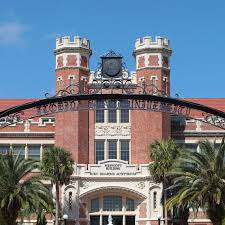Speaker
Description
Exclusive scattering processes as deeply virtual Compton scattering (DVCS) are very promising tools to study the three-dimensional partonic structure of any hadronic system from a new point of view. With respect to the collinear information obtained in deep inelastic scattering experiments, complementary and richer information about the innermost constituents can be achieved. As a matter of fact, the structure functions that can be accessed in DVCS are the generalized parton distributions (GPDs), non-perturbative objects encoding the correlation between the spatial and the momentum degrees of freedom of the constituent partons.
Moreover, considering nuclei as targets, two channels, the one where the initial nucleus breaks up after the scattering and the one where a bound nucleon can be detected in the final state after the breaking up, can be analyzed. The information that can be obtained in this way can be used also to dig more into longstanding open questions like the origin of the EMC effect, i.e. the modification of the bound nucleons’ parton structure induced by the nuclear medium.
In this talk, we will present phenomenological models able to describe the hadronic structure of nuclei within the GPD framework. In order to properly account for the nuclear effects entering the description of such reaction mechanisms, a realistic solution of the Schrödinger equation is needed in order to have a realistic description of the nuclear environment.
Light nuclei are paradigmatic systems for these studies since realistic nucleon-nucleon potential including three-body forces can be taken into account in the calculation.
While for $^4$He, the numerical results of our approach have already a well established comparison with the Jefferson Lab experimental data (for both the channels), preliminary results for a DVCS process off a neutron/proton bound in $^2$H will be shown.
Eventually, after a detailed description of our theoretical approaches, a glimpse on the phenomenology that can be done with these models in view of the EIC will be caught.
| speaker affiliation | IJCLab (FR) |
|---|

